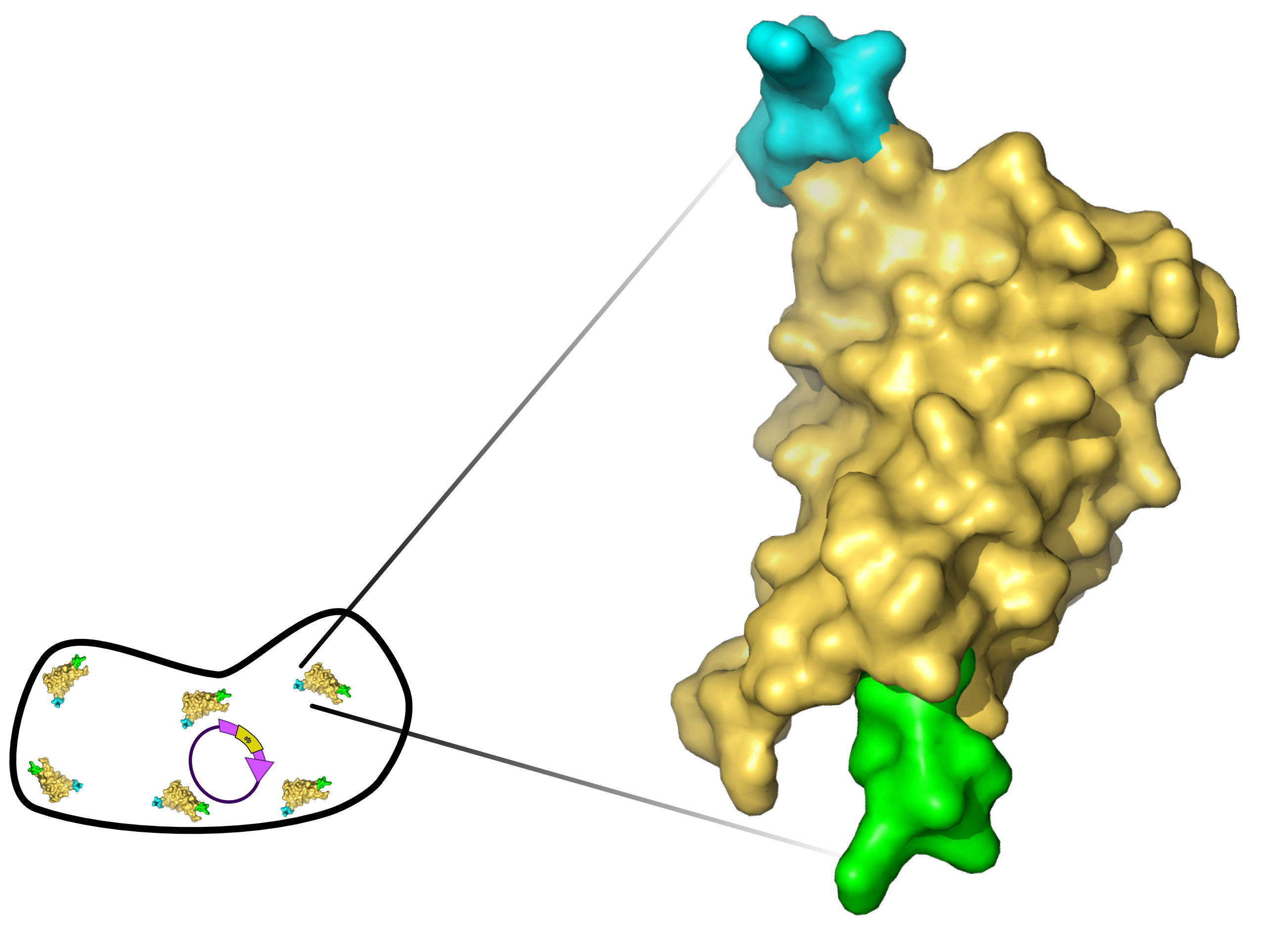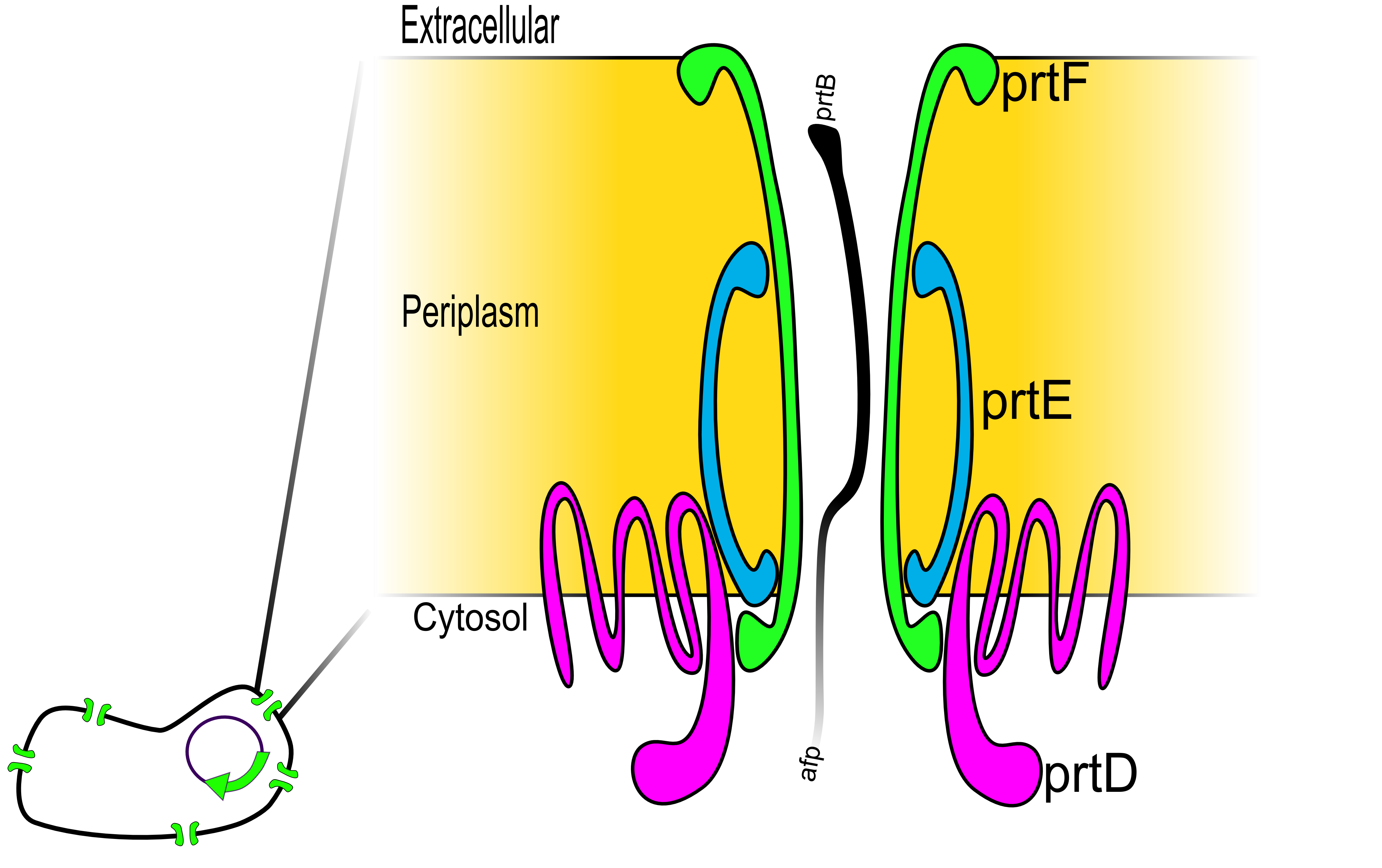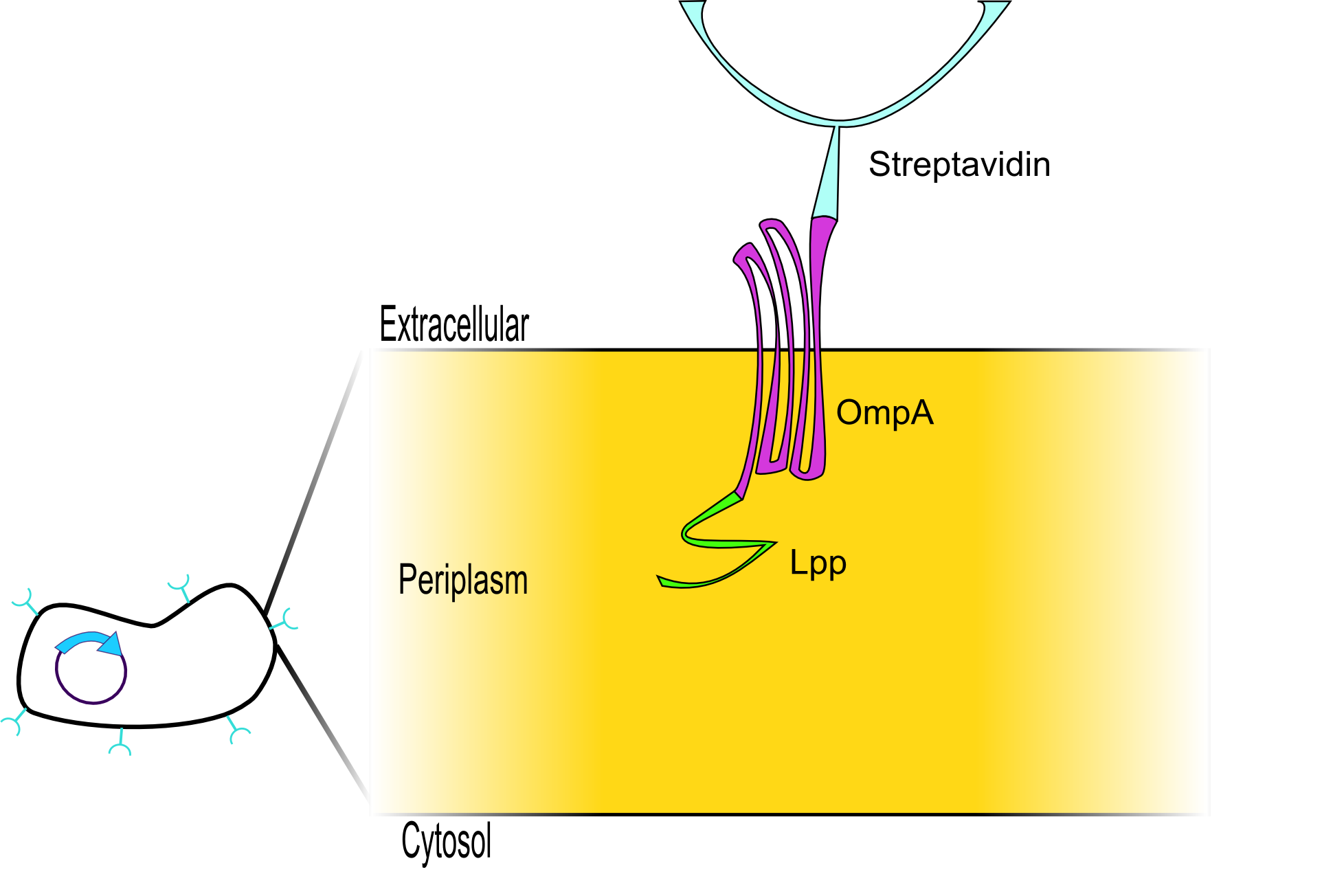Team:Washington/Accomplishments
From 2009.igem.org
| Line 40: | Line 40: | ||
BBa_K215002 Is a BioBrick part that was made to work in conjunction with the Secretion System (BBa_K215107). When used it creates a fusion protein, that contains the prtB secretion signal recognized by the secretion system. It also fuses to the protein a nano-tag that is able to bind Streptavidin, TEV protease site (for isolating your protein from the fusion) and Histidine Epitote Tags for easy protein purification. | BBa_K215002 Is a BioBrick part that was made to work in conjunction with the Secretion System (BBa_K215107). When used it creates a fusion protein, that contains the prtB secretion signal recognized by the secretion system. It also fuses to the protein a nano-tag that is able to bind Streptavidin, TEV protease site (for isolating your protein from the fusion) and Histidine Epitote Tags for easy protein purification. | ||
<br clear="all" /> | <br clear="all" /> | ||
| - | This part is composed of: | + | *This part is composed of: |
| + | **BBa_K215000: Protein Expression Vector | ||
| + | **BBa_K215001: Fusion protein sequence | ||
| - | + | *This part is used in: | |
| - | * | + | **BBa_K215010: GFP fusion protein |
| - | + | **BBa_K215011: BBa_K215090 (organic phosphotriesterase) fusion protein | |
| - | * | + | |
| + | *Current Status: Complete | ||
| - | + | *Future directions: | |
| - | + | **Make more universal, to work with all proteins | |
| - | * | + | **Optimize secretion-tag and nano-tag for fusion proteins |
| - | + | ||
| - | + | ||
| - | + | ||
| - | + | ||
| - | + | ||
| - | + | ||
| - | Future directions: | + | |
| - | + | ||
| - | * Make more universal, to work with all proteins | + | |
| - | * Optimize secretion-tag and nano-tag for fusion proteins | + | |
[[image:Secretion_structure.png |300px | left]] | [[image:Secretion_structure.png |300px | left]] | ||
Revision as of 16:20, 13 October 2009
Accomplished
- Create Protein Expression Vector for IPP system
- BBa_K215000, Strong laq promoter with strong RBS
- Demonstrate Stable, Functional, His-Tagged Fusion protein from expression vector
- [1]See Project Page: Target
- Synthesize and BioBrick type I secretion system from Erwinia Chrysanthemi
- BBa_K215107, prtDEF from Erwinia Chrysanthemi under constitutive expression in low copy plasmid
- Develop assay for looking for secreted proteins
- [2]See Project Page: Secretion
- Extensively characterize Legacy Surface Display BioBricks in registry[3]
- BBa_J36848
- BBa_J36849
- BBa_J36850
- BBa_J36851
- Develop new modular surface display system
- Computationally design novel Biotin-binding protein using Rosetta
- Submit at least one new Biobrick functioning as designed
- Target Expression Vector
- OPDA
- Gain real-world synthetic biology experience
To Do
- Test and optimize computationally designed biotin binding molecule.
- Demonstrate selective secretion of proteins harboring secretion tag
BBa_K215002 Is a BioBrick part that was made to work in conjunction with the Secretion System (BBa_K215107). When used it creates a fusion protein, that contains the prtB secretion signal recognized by the secretion system. It also fuses to the protein a nano-tag that is able to bind Streptavidin, TEV protease site (for isolating your protein from the fusion) and Histidine Epitote Tags for easy protein purification.
- This part is composed of:
- BBa_K215000: Protein Expression Vector
- BBa_K215001: Fusion protein sequence
- This part is used in:
- BBa_K215010: GFP fusion protein
- BBa_K215011: BBa_K215090 (organic phosphotriesterase) fusion protein
- Current Status: Complete
- Future directions:
- Make more universal, to work with all proteins
- Optimize secretion-tag and nano-tag for fusion proteins
BBa_K215107 Is a BioBrick version of the Type 1 secretion system of Erwinia Chrysanthemi. It secretes proteins that contain the prtB C-terminus Epitote tag. To create a fusion protein with the prtB tag see BBa_K215002.
This part is composed of:
BBa_K215100
- Gene encoding prtD
BBa_K215101
- Gene encoding prtE
BBa_K215102
- Gene encoding prtF
BBa_K215103
- BBa_K21500 + BBa_K21501 prtD + prtE
BBa_K215104
- BBa_K25103 + BBa_K25102 prtD + prtE + prtF
BBa_K215105
- BBa_K215104 + BBa_B0014 in PSB1AK3 prtDEF + Terminator
BBa_K215106
- BBa_K215104 + BBa_B0014 in PSB3T5 prtDEF + Terminator
BBa_K215108
- BBa_J23114 + BBa_K215106 Medium Promoter + prtDEF-Terminator
BBa_K215109
- BBa_J23113 + BBa_K215106 Weak Promoter + prtDEF-Terminator
Current Status: In progress
Future directions:
- Optimize RBS's
- Move secretion sequence into new plasmid, not TetR
- Try variety of cell lines.
BBa_K215200 is a Display vector that will allow for the presentation of any protein onto the surface of a cell by fusing the protein to Outer Membrane Protein A (OMPA). The fusion protein contains a GS peptide linker to space the displayed protein away from the outer membrane and also contains a TEV protease site to allow for purification of the displayed protein.
This Part is composed of:
- BBa_K215201 Display Vector with 5 trans-membrane OMPA
- BBa_K215250 Coding Sequence for fusion protein scaffold, 1 trans-membrane OMPA
- BBa_K215251 Coding Sequence for fusion protein scaffold, 5 trans-membrane OMPA
This Part is used in:
- BBa_K215210 Display system (1 trans-membrane) in protein expression vector
- BBa_K215211 Display system (5 trans-membrane) in protein expression vector
- BBa_K215260 BBa_K215210 fused to Streptavidin
- BBa_K215261 BBa_K215211 fused to Streptavidin
Current Status: In progress
Future Directions:
- Use new CDS display vector to display streptavidin
- Design monomeric protein to bind peptide sequence
- Utilize other proteins on CDS to test for activity of other proteins
| Biobricks Submitted | Current Status Report | Future Directions |
|---|
Quick overview of what was done and the status of everyting. Maybe 3 paragraphs (display, secretion, conclusions)
 "
"




